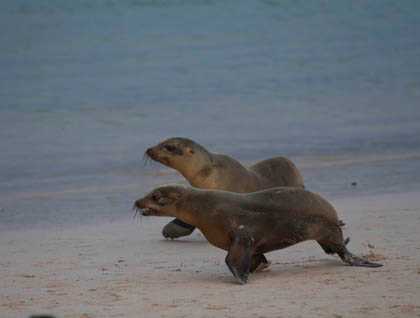Galapagos is located 600 nautical miles off the coast of South America, and the flora and fauna found in this isolated archipelago is so unique; many of which are found here and nowhere else in our planet. The distance that separates Galapagos with the Americas is the main reason for this scenario. There is not another place on earth where reptiles are more successful than mammals except for in the Galapagos.
This group of oceanic islands is also one of the best places to see adaptive radiation in such an amazing degree. It also means that the same ancestor was able to colonize different islands, and its descendants had to adapt to the conditions found on that particular island.
Today we had one of the best examples for such an amazing adaptation with iguanas. One of these reptiles is found only on Santa Fe Island, another one is found on five different islands, and marine iguanas are found all over the archipelago. Every one of them found its niche and had to adapt to their home island. You can only truly understand adaptation, this mystery of mysteries, just when you get here to Galapagos, simply because nothing really prepares you for this astonishing experience in this part of the world.
South Plaza and Santa Fe Islands are very small geological formations, but each one of them has a lot to offer for our guests and that is the reason we spend the whole day exploring these two Islands.
The Galapagos marine world is another world within itself. Some of these species are found only here and nowhere else, but this time what’s responsible for this are the three main oceanic currents that bathe Galapagos at different times of the year. For sure the main entertainers here are the Galapagos sea lions, and today was not the exception. And while swimming with them, we also spotted two species of sea turtles. Pacific green, which are the most common ones, and we also spotted a hawksbill turtle which are less common in the Galapagos waters. We also spotted sharks, eels, rays, and many species of fishes in just one day.







